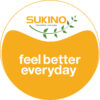A stroke is a life-altering event that can have profound and lasting effects on an individual’s life. The journey to recovery after a stroke is a complex and unique experience, varying from person to person. While it’s impossible to predict an exact timeline for recovery, understanding the general process and factors that influence it can provide insight into what stroke survivors and their caregivers can expect. In this blog, we will explore the dynamics of stroke recovery, including the phases, factors, and strategies that contribute to the rehabilitation process.
The Phases of Stroke Recovery
Stroke recovery is typically divided into three distinct phases, each with its characteristics and goals:
- Acute Phase: This phase begins immediately after a stroke occurs and continues for a few days to a few weeks. The primary focus during this phase is on medical stabilization and preventing further damage to the brain. Medical professionals work to remove blood clots, reduce swelling, and ensure that the stroke survivor’s vital signs are stable.
- Subacute Phase: The subacute phase generally lasts for several weeks to several months after the stroke. During this period, rehabilitation efforts intensify. The goal is to maximize functional independence and improve the survivor’s quality of life. Rehabilitation may include physical, occupational, and speech therapy.
- Chronic Phase: The chronic phase begins several months after a stroke and can last indefinitely. At this point, the focus shifts to maintaining and improving the gains made during the subacute phase. While further recovery is still possible, the emphasis is on long-term management and adapting to any permanent changes in function.
Factors Affecting Stroke Recovery
Stroke recovery is influenced by a multitude of factors, some of which are beyond a person’s control, which include:
- Type of Stroke: Ischemic strokes, caused by blood clots, and hemorrhagic strokes, resulting from bleeding in the brain, have different recovery trajectories. Ischemic strokes are more common and may allow for a more predictable recovery.
- Stroke Severity: The extent of brain damage and the areas affected by the stroke play a crucial role in determining the degree of recovery. Severe strokes can lead to more pronounced and lasting deficits.
- Timing of Medical Treatment: The sooner medical treatment is initiated after a stroke, the better the chances of recovery. Timely interventions such as clot-dissolving medications or mechanical thrombectomy can limit brain damage.
- Age: Younger stroke survivors often have better recovery potential than older individuals. However, older adults can still make significant progress with the right interventions.
- Pre-Stroke Health: The individual’s overall health before the stroke can impact recovery. Conditions such as diabetes, hypertension, and heart disease can complicate the recovery process.
- Rehabilitation: The intensity and quality of rehabilitation therapy have a direct effect on recovery. Regular, customized therapy plans are key to regaining lost function.
- Social Support: A strong support system, including family, friends, and caregivers, can have a significant impact on recovery. Emotional and practical support can make the journey easier.
- Motivation and Attitude: A positive mindset and motivation to regain lost abilities are essential for recovery. Believing in one’s potential for improvement can be a driving force.
- Lifestyle Changes: Lifestyle modifications, including healthy eating, regular exercise, and managing chronic conditions, can contribute to recovery and reduce the risk of a second stroke.
- Medications: Medications to manage stroke risk factors, such as anticoagulants for atrial fibrillation or statins for high cholesterol, can aid in recovery and prevent further strokes.

Strategies for Stroke Recovery
The list of strategies if embraced by individuals and healthcare professionals assisting stroke survivors, the recovery process can significantly accelerate. Sukino takes pride in affirming its commitment to the effective implementation of each of these strategies to ensure the highest level of care for its patients.
- Rehabilitation Therapy: Physical, occupational, and speech therapy are essential components of stroke recovery. These therapies help survivors regain mobility, improve fine motor skills, and address speech and language difficulties.
- Medication Management: Stroke survivors may require medications to manage conditions like high blood pressure, diabetes, or high cholesterol. Adhering to medication regimens is crucial for preventing further strokes and promoting recovery.
- Diet and Nutrition: A balanced diet that focuses on whole grains, lean proteins, fruits, vegetables, and healthy fats can support recovery and overall health. Proper nutrition also plays a role in managing stroke risk factors.
- Exercise: Regular physical activity is vital for stroke recovery. It can help improve strength, coordination, and overall mobility. Consult with a healthcare provider to develop a safe and effective exercise plan.
- Social Support: Emotional and practical support from loved ones can boost motivation and morale during the recovery process. Joining support groups can connect survivors with others facing similar challenges.
- Adaptive Equipment: Assistive devices, such as walkers, canes, or communication aids, can enhance independence and make daily activities more manageable.
- Mindfulness and Stress Management: Techniques like meditation and deep breathing can reduce stress and improve emotional well-being, which are important for recovery.
- Setting Realistic Goals: Establishing achievable goals helps track progress and maintain motivation. Setting small, measurable objectives can be particularly helpful.
- Communication: If speech or language difficulties persist, working with a speech therapist can improve communication skills and quality of life.
- Preventing Future Strokes: Managing stroke risk factors and adhering to a preventive care plan can reduce the likelihood of experiencing another stroke.
The Unpredictability of Recovery
It’s important to note that stroke recovery is unpredictable. While many survivors make significant progress and regain substantial function, others may continue to face challenges. Recovery timelines and outcomes are highly individualized and may change over time. Additionally, it’s not uncommon for recovery to be non-linear, with periods of improvement followed by plateaus.
Conclusion
Stroke recovery is a complex and deeply personal journey. While some common phases and factors influence recovery, each survivor’s experience is unique. The key to a successful recovery lies in a combination of factors, including early medical intervention, comprehensive rehabilitation, a strong support system, and a determined mindset. Understanding the complexities of stroke recovery can help individuals and their caregivers navigate the path to improved function and a higher quality of life. While the timeline and outcomes may vary, the potential for progress and positive change is always present.
We are India’s first comprehensive continuum care provider. We provide multidisciplinary out of hospital care to acute and post-acute and chronically ill patients at our critical care facilities and your home.


